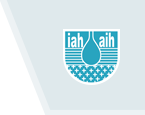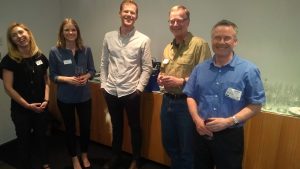2018
Past Events in Christchurch
Tuesday 6 November 2018
Technical meeting presented by Mike Thorley from Beca and Bridget O’Brien from Christchurch City Council. Ltd. This event was kindly sponsored by Beca who provided the venue and the drinks for the event.
Improving well head protection in Christchurch
Synopsis: Wells are our gateway to underground drinking-water reserves which serve many communities around New Zealand. Contamination of the Havelock North supply in August 2016 not only highlighted the importance of source protection and good management, but also the need for good quality infrastructure and in particular the protection of well heads. The Havelock North Drinking Water Inquiry Stage 2 report recommended new installations of below ground well heads be prohibited, abolishing the secure bore water status, and mandating universal treatment. Exemptions from treatment are likely to require evidence of high quality infrastructure being in place and demonstration of sound risk management practices.
The water supply for Christchurch is groundwater taken from 139 wells across the city and pumped into the reticulation via 53 pump stations. Late in 2017, Christchurch City Council (CCC) requested experts undertake routine well head inspections of 25 well heads and assess them against the Drinking Water Standards 2005 (revised 2008) Bore Water Security Criterion 2 (that the bore head provides satisfactory protection to prevent contaminants entering the water supply). These assessment found none of the well heads met Criterion 2. The Drinking Water Assessor subsequently revoked the provisionally secure groundwater status for Christchurch and Brooklands/Kainga at the end of 2017. As a result, CCC made the decision to temporarily chlorinate the water supply while the well heads are remediated to the required standard.
Whilst new above ground well head installations in Christchurch are of a very high quality and represent best practice in New Zealand, many of the older below ground well heads were installed prior to the DWSNZ requirements for well head protection. CCC are now delivering a remediation programme for the well heads so that secure bore water status can be regained and temporary chlorination can cease. Raising all well heads above ground and replacing shallow aquifer wells provides the best chance of seeking an exemption from mandatory treatment, should this be imposed by the government, alongside other reticulation management measures.
The presentation discussed some of challenges in remediating well heads in Christchurch and outlined the progress to date.
13 June 2018
Technical meeting presented by Mr Eric Van Nieuwkerk from Golder Associated (NZ) Ltd. This event was kindly sponsored by Golder Associated (NZ) Ltd who provided the venue and the drinks for the event.
The Gisborne Managed Aquifer Recharge (MAR) project, improving aquifer yield and water quality with ASTR
Abstract
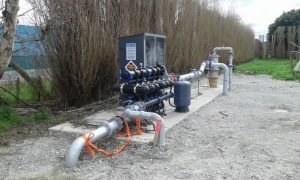 The long-term water availability in the Poverty Bay area, Gisborne, is a potentially limiting factor in future regional development. Irrigation for horticultural purposes is one of the main uses of water across the Poverty Bay Flats and a substantial proportion is derived from groundwater. Gisborne District Council (GDC) identified declining groundwater level trends in the Poverty Bay area as an environmental and water supply reliability issue. These trends are linked to increasing groundwater abstraction for irrigation purposes.
The long-term water availability in the Poverty Bay area, Gisborne, is a potentially limiting factor in future regional development. Irrigation for horticultural purposes is one of the main uses of water across the Poverty Bay Flats and a substantial proportion is derived from groundwater. Gisborne District Council (GDC) identified declining groundwater level trends in the Poverty Bay area as an environmental and water supply reliability issue. These trends are linked to increasing groundwater abstraction for irrigation purposes.
MAR is one option under consideration to improve water security, and involves the replenishment of the aquifer ensuring sustained yields from the aquifers beneath the Poverty Bay Flats. The Makauri Aquifer was selected for the MAR pilot project due to its relatively high usage, declining groundwater level trends, broad extent and good transmissivity. The installation of a Makauri Aquifer injection well, headworks and filter system was completed in May 2017 and injection trial undertaken between June – September 2017. Waipaoa River water is sourced via an existing infiltration gallery at Kaiaponi Farms and after filtering injected into the Makauri Aquifer at the MAR site. The 2017 injection trial showed that augmentation of the Makauri Aquifer is technically viable (73,000 m3 was injected in 59 days, approximate injection rate was 15 L/s). An increase in groundwater levels during injection is clearly visible, with mounding effects recorded up to 1,500 m away from injection well.
A full scheme could potentially have both a stabilising effect on Makauri Aquifer groundwater levels enhancing aquifer yield, as well as beneficial effects on water quality. However, there are risks associated with the Gisborne MAR project that need to be acknowledged and proper management and mitigation strategies put in place. One of the risks is well clogging associated with the injection of oxic river water into the anoxic Makauri Aquifer.
Mr Eric Van Nieuwkerk from Golder Associates (NZ) Ltd presented a summary of the investigations they have completed for Gisborne District Council to reverse groundwater level trends through replenishment of the Makauri Aquifer. Further investigations and trialling is scheduled in the next two years, to better understand the risk and the best way to develop a full scale MAR scheme. Further information is available at: http://www.gdc.govt.nz/managed–aquifer–recharge–reports
13 March 2018
Technical meeting presented by Mr Tony Cussins from Tonkin and Taylor Ltd and Dr Brent Gilpin from Environmental Science and Research. This event was kindly sponsored by Tonkin & Taylor Ltd who provided the venue and the drinks for the event.
The world’s largest waterborne campylobacteriosis outbreak: Havelock North August 2016
Abstract
In August 2016 over 5,000 people become ill with campylobacteriosis following consumption of reticulated water in Havelock North, New Zealand. Campylobacter have been isolated and genotyped from over 200 clinical isolates, reticulated water samples, groundwater samples, surface water samples and animal faecal samples. Source attribution suggested that isolates were likely to be from ruminants. Five main genotypes of campylobacter were found in clinical cases, with three of these also found in reticulated water, two in the bores, and three in sheep faeces. A number of pathways for sheep faeces to contaminant the bore have been investigated. In common with most waterborne outbreaks, this event is the result of the combination of a very heavy rainfall event, close contaminant source, and inadequate treatment of the water (in this case no treatment). This outbreak will change the way drinking water is managed in New Zealand.
 Mr Tony Cussins from Tonkin and Taylor and Dr Brent Gilpin from Environmental Science and Research (ESR) presented some of the methodologies used to isolate the contaminant source, and evaluate the contaminant fate & transport mechanisms employed by ESR and Tonkin + Taylor following the Campylobacteriosis outbreak. They discussed some of the key recommendations from Havelock North Inquiry Stage 2, including implications for reform of the drinking water supply industry.
Mr Tony Cussins from Tonkin and Taylor and Dr Brent Gilpin from Environmental Science and Research (ESR) presented some of the methodologies used to isolate the contaminant source, and evaluate the contaminant fate & transport mechanisms employed by ESR and Tonkin + Taylor following the Campylobacteriosis outbreak. They discussed some of the key recommendations from Havelock North Inquiry Stage 2, including implications for reform of the drinking water supply industry.
Past Events in Auckland
Tuesday 13 November 2018
Technical meeting presented by Brian Barnett from Jacobs. This event was kindly sponsored by Jacobs who provided the venue and the drinks for the event. presented .
What’s happening in Groundwater Modelling in Australia
Synopsis: The presentation covered a series of topics to highlight the many opportunities and challenges currently faced by groundwater modellers in Australia. The topics discussed included:
- Modelling major transport infrastructure projects in Melbourne and Sydney and how we can learn from past mistakes;
- Recent software advances including Modflow USG and Feflow V 7.1 and what this means for existing models;
- Modelling in the coal mining industry and
- PFAS contamination of groundwater.
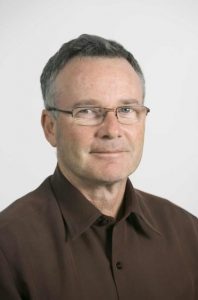 Brian has forty years experience in groundwater resource assessment, groundwater modelling, hydrogeology and geothermal reservoir engineering. He has acquired a broad range of modelling experience through numerous technical investigations of groundwater resources, mine dewatering and water management, impacts of land use change and contaminant transport. He is Jacobs’ senior groundwater modeller in Australia and is responsible for ensuring the highest technical standards in all aspects of numerical modelling of groundwater flow and solute transport throughout the company. Brian was a principal author and editor of the Australian Groundwater Modelling Guidelines. Published in 2012, the Guidelines have been accepted throughout Australia as a benchmark defining best industry practice.
Brian has forty years experience in groundwater resource assessment, groundwater modelling, hydrogeology and geothermal reservoir engineering. He has acquired a broad range of modelling experience through numerous technical investigations of groundwater resources, mine dewatering and water management, impacts of land use change and contaminant transport. He is Jacobs’ senior groundwater modeller in Australia and is responsible for ensuring the highest technical standards in all aspects of numerical modelling of groundwater flow and solute transport throughout the company. Brian was a principal author and editor of the Australian Groundwater Modelling Guidelines. Published in 2012, the Guidelines have been accepted throughout Australia as a benchmark defining best industry practice.
Tuesday 4th of September 2018
Technical meeting presented by Dr Mauricio Taulis from Jacobs. This event was kindly sponsored by Beca Ltd who provided the venue and the drinks for the event.
Using geophysical data to inform groundwater exploration in a data-constrained environment, Grande Comore in the Indian Ocean
Abstract
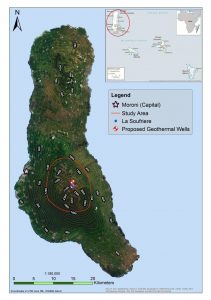 Grande Comore is volcanic island in the Indian Ocean with potential for geothermal development (Jacobs, 2015). Initial geothermal surface investigations have focused on developing this resource on the flanks of the Karthala Volcano at elevations of about 2,100 m above sea level. Geothermal wells at this location will have to be drilled to depths of approximately 2,500 and 2,900 m below ground level to intersect the geothermal reservoir, and will require about 57 L/s of water during drilling. Despite high rainfall (about 2,460 mm/year) occurring on Grande Comore, runoff is very low (about 15% of precipitation) and the highly permeable basalts, scoria layers, and lava flows impede the formation of permanent rivers on the island (Bourhane A, 2016). Consequently, the main options for sourcing fresh water include collection of rainwater and groundwater. The aim of this study is to assess the water supply capacity and feasibility associated with groundwater supply to meet geothermal drilling requirements (e.g. Study Area in Figure A). This option involves identifying areas with the highest potential well yield of groundwater, which will be pumped via production bores. After finding areas of high production, the number of wells needed to satisfy the drilling demand is calculated.
Grande Comore is volcanic island in the Indian Ocean with potential for geothermal development (Jacobs, 2015). Initial geothermal surface investigations have focused on developing this resource on the flanks of the Karthala Volcano at elevations of about 2,100 m above sea level. Geothermal wells at this location will have to be drilled to depths of approximately 2,500 and 2,900 m below ground level to intersect the geothermal reservoir, and will require about 57 L/s of water during drilling. Despite high rainfall (about 2,460 mm/year) occurring on Grande Comore, runoff is very low (about 15% of precipitation) and the highly permeable basalts, scoria layers, and lava flows impede the formation of permanent rivers on the island (Bourhane A, 2016). Consequently, the main options for sourcing fresh water include collection of rainwater and groundwater. The aim of this study is to assess the water supply capacity and feasibility associated with groundwater supply to meet geothermal drilling requirements (e.g. Study Area in Figure A). This option involves identifying areas with the highest potential well yield of groundwater, which will be pumped via production bores. After finding areas of high production, the number of wells needed to satisfy the drilling demand is calculated.
References:
Bourhane A, C. J. (2016). Groundwater Prospection in Grande Comore Island – Joint Contribution of Geophysical Methods, Hydrgeological Time-Series Analysis and Groundwater Modelling. In B. P (Ed.), Active Volcanoes of the World, Active Volcanoes of the Southwest Indian Ocean (pp. 385 – 401). Heidelberg: Springer.
Jacobs. (2015). Geothermal Surface Exploration of Comoros, Mount Karthala Integrated Resource Assessment. Auckland: Jacobs. Report for MFAT.




